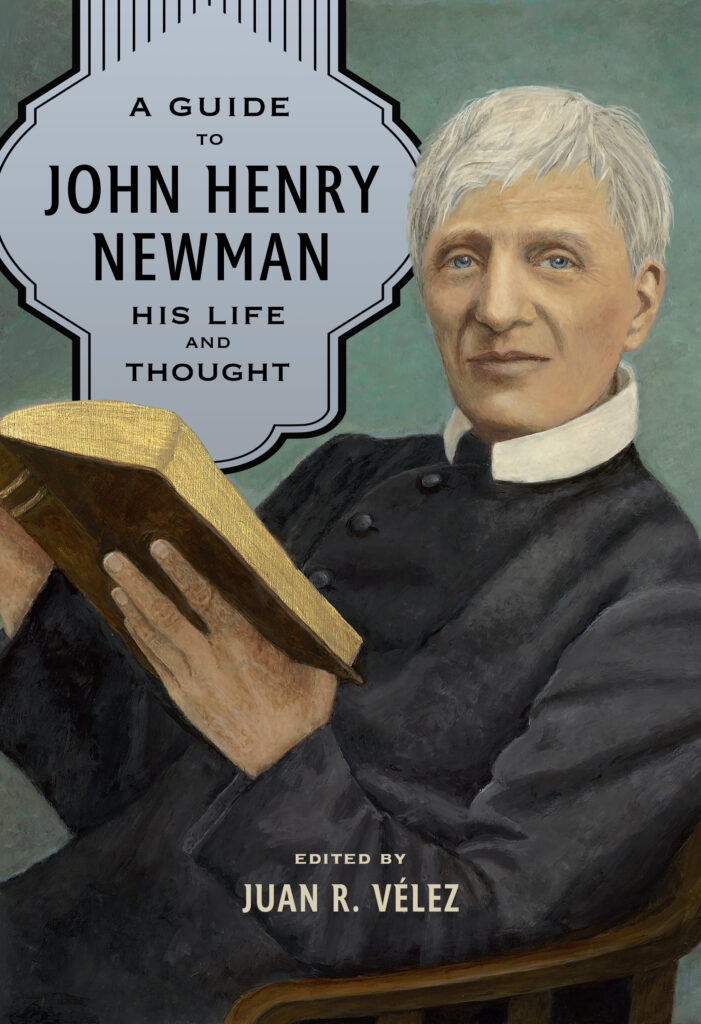The following is an excerpt of “Newman, the Unfailing Friend—and an Old Blue Cloak” by Víctor García Ruiz, an essay from A Guide to John Henry Newman: His Life and Thought edited by Juan R. Vélez (CUA Press, 2022).
The Oxford Movement: Keble, Pusey, and Newman
The Oxford Movement had a triumvirate at its forefront. To commemorate this there are physical reminders: in Oxford there has been a Keble College since 1870 and a Pusey House since 1884. On the road to Littlemore, beyond Rose Hill and just before the Ring Road, a side road bears the sign Newman Road, and leads to Cardinal Close. As far as I know, this is the one memorial Oxford has dedicated to Newman, which is only to be expected. John Keble and Edward Pusey, especially the latter, made Anglo-Catholicism possible; whereas the Establishment has always viewed Newman’s standing with ambivalence, at least until his beatification in 2010: they thought him admirable but still a renegade; brilliant, but after all, a traitor. It does not seem Newman had a special appetite for recognition. It is beyond doubt that a Tractarian Movement without Newman would never have achieved the huge impact it made on Victorian England. Nevertheless, with both humility and grace he saluted an occasional sermon by John Keble, “National Apostasy,” in this fashion: “I have ever considered and kept the day, as the start of the religious movement of 1833.”24
Edward Pusey’s influence is made obvious by the fact that the Tractarians were sometimes called Puseyites. At the end of that same 1833 Newman tried to gain Pusey, a former colleague at Oriel and now a Regius Professor, to write a tract for the series. Pusey accepted on condition that he would sign it—the Tracts were anonymous—to avoid any implication that he was one of those agitating.25 Surprisingly, not only was Pusey thought to be one “of those people” but, what is more, their leader as well, and the whole group was named after him. Keble and Pusey responded with magnanimity on that fateful day in October 1845 when Newman sent them message that “I am expecting Father Dominic the Passionist, . . . I trust he will receive me, Bowles and Stanton into what I believe to be the one and only fold of the Redeemer.”26 In the Summer 1863, on his return from one of his few travels abroad, Newman found a letter from Keble on his desk, the first in seventeen years. His reply is a tribute to their friendship and a full display of tact.
Never have I doubted for one moment your affection for me—never have I been hurt at your silence. I interpreted it easily—it was not the silence of men, nor the forgetfulness of men, who can recollect about me and talk about me enough, when there is something to be said to my disparagement. You are always with me a thought of reverence and love—and there is nothing I love better than you, and Isaac, and Cope-land and many others I could name, except Him whom I ought to love best of all and supremely. May He Himself, who is the over abundant compensation for all losses, give me His own Presence—and then I shall want nothing and desiderate nothing—but none but He, can make up for the losses of those old familiar faces which haunt me continually.27

Only once would the three meet again. It was in September 1865, in Hursley, in Keble’s rural parish (near Southampton, Hampshire). Newman’s diary reads, laconically: “Tuesday 12 September went to Keble’s, where Pusey—dined with them—then to Ryde to the Bowdens.”28 Newman produced a bittersweet account of the meeting in a letter to Ambrose St John, his last great friend, written in the house of his first great friend, the late Bowden, in which he speaks about two other great friendships recovered after 20 years of silence. A truly marvelous concentration of coincidences!29
Footnotes
- Apo., 35.
- See George Prevost, ed., The Autobiography of Isaac Williams: As Throwing Further Light on the History of the Oxford Movement (London: Longmans, Green & Co., 1892), 70–72.
- LD xi, 9.
- LD xx, 503.
- LD xxii, 51.
- See LD xxii, 52–53.

